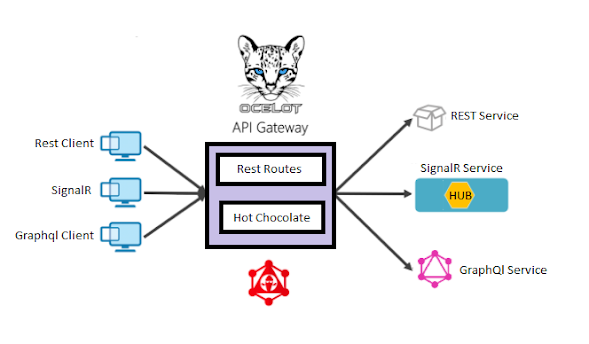Hybrid Federated Ocelot Gateway

Ocelot: People who have experienced with .net core distributed microservices architecture will be very familiar with an ocelot. It's an API gateway to forward the request based on the routes. It supports the HTTP for rest services and WebSocket protocol for signalR services. It's providing a lot of features like authentication, Authorization, adding custom headers, and a lot. All are configurable. We can easily orchestrate multiple services using ocelot. It's a single point of contact to the outside world. It acts as a reverse proxy. As part of microservices architecture, each service will have a single responsibility. Sometimes service needs some data from other services or needs to complete some action from other services as part of business workflow. As part of distributed microservices architecture, there are many ways to enable communication between the services. 1) Service to Service communication via HTTP or Grpc. 2) Event-Driven via pub/sub model Service to servic...
